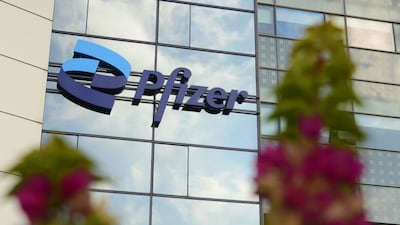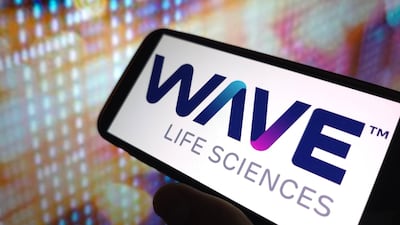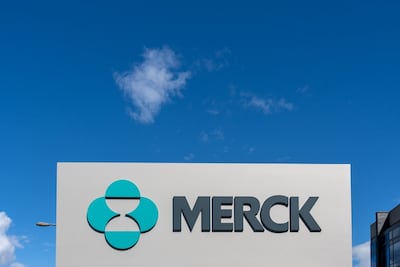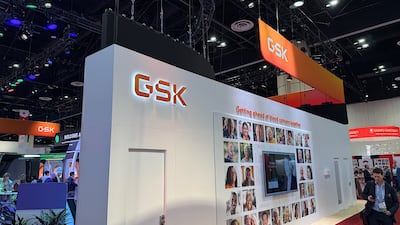Therapy Areas
Alimentary/Metabolic
Triple agonist retatrutide yielded 28.7% weight loss at 68 weeks, besting Zepbound’s Phase III data, while also showing benefit in knee osteoarthritis pain.
With its M&A war chest diminished and still seeking to add to its weight-management pipeline, Pfizer obtains an oral GLP-1 analog from Fosun subsidiary YaoPharma.
WVE-007 could be a "powerful disruptor" to the existing obesity market, says the company, which is set to raise $250m to fund its Phase II studies.
The oral GLP-1 showed efficacy on par with Lilly’s orforglipron, positioning it as a contender in the red-hot obesity drug market.
Anti-infective
“We are not going back to Pasteur,” CEO Albert Bourla said, criticizing the US government’s current anti-vaccine rhetoric.
Innoviva’s Nuzolvence looks to have a convenience edge as it and GSK’s Blujepa step into a growing market that has seen little in the way of innovation for decades, but neither is likely to displace low-cost alternatives.
Still betting on its vaccines portfolio, Moderna is also hoping to deliver on its ambitions in oncology with a Phase III candidate partnered with Merck, while cutting pipeline programs and seeking manufacturing efficiencies.
Cidara’s long-acting antibody candidate could help protect millions of immunocompromised patients against flu – and could work around growing vaccine hesitancy in the US.
Anticancer
Phase III results for gamma secretase inhibitor varegacestat in the treatment of desmoid tumors appear superior on both efficacy and safety to Merck KGaA’s Ogsiveo (nirogacestat).
With registrational Phase II data in Stiff Person Syndrome, Kyverna intends to file a BLA for mivocabtagene autoleucel in 2026. Longer term, it hopes to get the CAR-T approved for myasthenia gravis.
The companies presented 52-week data from the pivotal Phase III VERIFY study at the recent American Society of Hematology meeting, after releasing 32-week data earlier this year.
The drugmaker presented multiple posters of data for the recently reapproved BCMA-targeting antibody-drug conjugate at the just concluded ASH meeting.
Antiparasitic
Coartem Baby to be rolled out in eight African countries in the autumn.
The Swiss major’s global health chief Lutz Hegemann tells Scrip on a trip to Rwanda that being a profitable enterprise while helping to improve access to new and older therapies for those who need it most is the real measure of a successful business.
Lotilaner, the active ingredient in Tarsus’s Demodex blepharitis drug Xdemvy, showed significant ability to kill ticks in a small Phase IIa study. Analysts call the Lyme program a likely out-licensing opportunity for Tarsus.
Gains from its COVID-19 vaccine made Serum Institute’s founder the world’s richest healthcare billionaire. But the demand for boosters hasn’t materialized as expected, leading to a deal with Biocon being tweaked. Meanwhile, gains from India’s first indigenously-developed HPV vaccine and Oxford-partnered malaria vaccine seem imminent.
Blood and Clotting
The company, which was on the verge of bankruptcy last year, has secured an expanded approval for Omisirge for severe aplastic anemia.
Novartis presented Phase III results for anti-BAFF/ADCC antibody ianalumab in the second-line treatment of immune thrombocytopenia but will wait for first-line data to file for approvals in 2027.
The base-editing company’s risto-cel may have an efficacy edge over Vertex’s Casgevy, but both will be held back by safety concerns about chemotherapy preconditioning for patients.
The Watertown, MA-based biotech is set for a pivotal year, with multiple catalysts expected in 2026, including full data from a Phase II trial it previewed at ASH 2025.
Cardiovascular
The US FDA approved LIB Therapeutics’ Lerochol (lerodalcibep), a PCSK9-inhibiting protein therapeutic injected once-monthly that does not require refrigeration, for adults with high cholesterol, including those with HeFH.
The nasal spray was approved by the US FDA as a rapid acting treatment for acute symptomatic episodes of paroxysmal supraventricular tachycardia (PSVT).
With the help of a purchased priority review voucher, the drug looks likely to become the first aldosterone synthase inhibitor to receive regulatory authorization, ahead of Mineralys' lorundrostat.
Successful stroke data on the oral Factor XIa inhibitor represents the first Phase III success for the class and is a major boost for Bayer’s cardiovascular franchise.
























